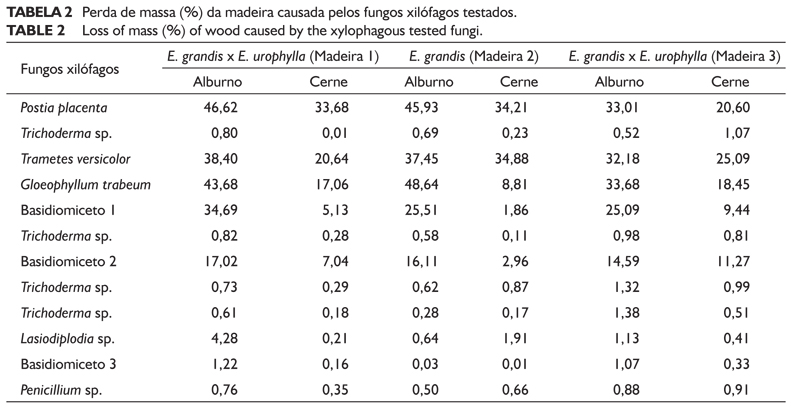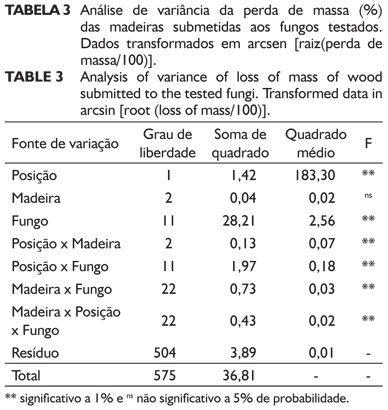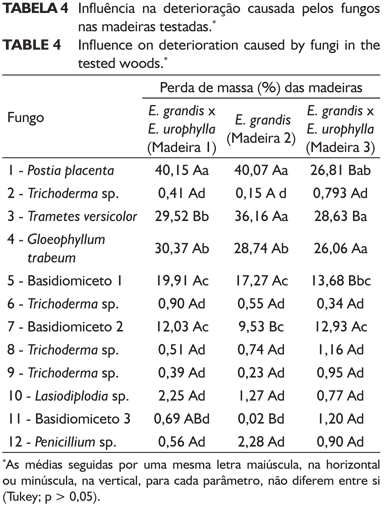This research aimed to test the deteriorating ability of fungi isolated from Eucalyptus spp. wood and perform chemical analysis of wood deteriorated, to verify which components of wood suffered major changes in the light of the attack. The experiment was conducted in the Laboratório de Biodeterioração da Madeira, Departamento de Ciências Florestais e da Madeira, Centro de Ciências Agrárias, Universidade Federal do Espírito Santo in the municipality of Jerônimo Monteiro, ES, Brazil. A total of 12 fungi were used, and nine of these came from pure cultures isolated from fragments of stumps of eucalypt woods deteriorated, collected in three distinct locations, and three with recognized capacity of deterioration that were used as the standard of comparison. The Basidiomycetous fungi 1 and 2 showed high capacity of deterioration of Eucalyptus spp. The heartwood of eucalypt showed a greater natural resistance than the sapwood, but the fungi were able to degrade both them. In general, there were, an increase in the content of extractives in wood damaged (heartwood and sapwood), for Basidiomycetous 1 and Basidiomycetous 2. The heartwood of Eucalyptus grandis there was a decrease in extractives content for both Basidiomycetes. To the holocelulose (cellulose and hemicelluloses), there were small differences between the healthy and damaged wood (mean variations around 1 %). The Fungi, Basidiomycetous 2 caused a greater degradation of lignin as compared to the Basidiomycetous 1.
Decay fungi; Biological assays; Chemical analysis






